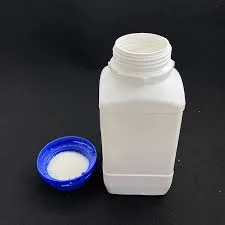Amphoteric Polyacrylamide Properties and Applications
Amphoteric polyacrylamide (APAM) is a versatile polymer that has garnered significant attention in various fields due to its unique properties. Characterized by the presence of both anionic (negatively charged) and cationic (positively charged) groups, amphoteric polyacrylamide can interact with a wide range of substances in different environments, making it suitable for various applications, particularly in water treatment, agriculture, and cosmetics.
Structure and Properties
APAM is synthesized through the polymerization of acrylamide and its ionic derivatives, allowing it to exhibit dual charge characteristics. The amphoteric nature of this polymer is primarily attributed to the incorporation of both positive and negative functional groups into its molecular structure. This property enables APAM to adapt to different pH levels and ionic environments, making it highly effective in scenarios where ionic interactions are essential.
One of the most remarkable features of APAM is its ability to flocculate, coagulate, and stabilize suspensions of particles in liquids. Under acidic or neutral pH conditions, the cationic portions of APAM dominate, allowing it to flocculate negatively charged particles. Conversely, in alkaline conditions, the anionic sections become more prevalent, enabling the polymer to interact with positively charged entities. This charge-switching ability enhances its performance in various applications.
Applications
1. Water Treatment APAM is widely employed in the treatment of wastewater and drinking water. Its flocculating properties help remove suspended solids, organic matter, and other contaminants from water systems. In municipal and industrial wastewater treatment, APAM effectively binds with pollutants, promoting easier removal through sedimentation. The dual charge characteristic allows it to adapt to different types of wastewater, ensuring efficient treatment regardless of the varying concentration of pollutants.
amphoteric polyacrylamide

2. Agriculture In agricultural practices, amphoteric polyacrylamide plays a critical role in improving soil structure and water retention. When applied to soil, APAM particles absorb moisture and create a gel-like consistency that enhances soil aggregation. This helps in reducing erosion and improving crop productivity by retaining water in the root zone. Furthermore, APAM can also assist in controlling soil salinity and promoting the stability of soil aggregates, which is vital for sustainable agricultural practices.
3. Cosmetics and Personal Care The cosmetic industry has also recognized the value of amphoteric polyacrylamide. Its emulsifying and thickening properties make it an ideal ingredient in various formulations, including lotions, creams, and shampoos. APAM contributes to the texture and stability of products, enhancing their applicability and effectiveness. Additionally, due to its biocompatibility, it is considered a safe additive for personal care products.
4. Oil Recovery In the oil industry, APAM is used as a viscosity modifier and as a key agent in enhanced oil recovery techniques. By improving fluidity and reducing surface tension, APAM helps in the displacement of oil from porous rocks, thereby increasing the efficiency of oil extraction processes.
Environmental Impact and Safety
When discussing polymers like amphoteric polyacrylamide, concerns regarding environmental impact and safety are paramount. APAM is generally considered to be safe for use in water treatment and agriculture, and its biodegradability makes it a more environmentally friendly option compared to some other synthetic polymers. However, the production and degradation of polyacrylamide can lead to the release of acrylamide, a neurotoxic compound, which raises concerns about its safety in large-scale applications. Hence, managing its application and ensuring compliance with environmental regulations is crucial.
Conclusion
Amphoteric polyacrylamide is a unique polymer with diverse applications resulting from its dual charge characteristics. Its effectiveness in water treatment, agriculture, cosmetics, and oil recovery showcases its versatility and importance in both industrial and consumer sectors. As research continues and technology advances, the potential applications of APAM are likely to expand, contributing to innovations in environmental management and sustainable practices. The future of amphoteric polyacrylamide looks promising, provided that its use is managed with care to mitigate any potential environmental impact.

